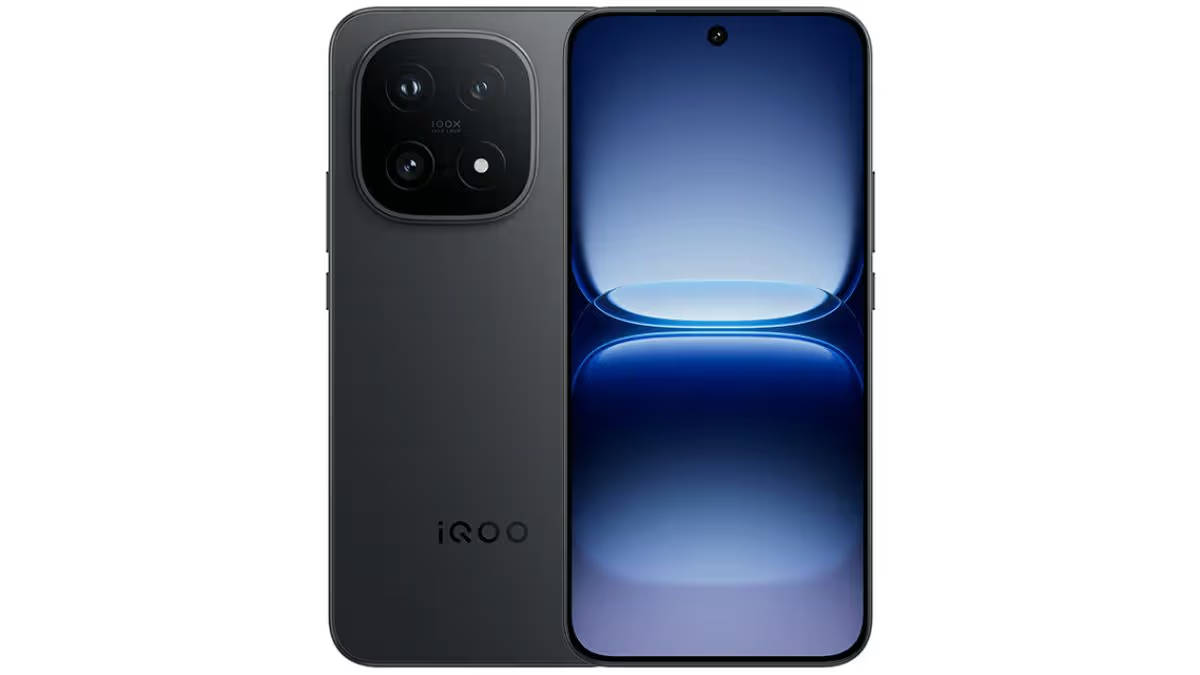
“The Moto G makes for a great value for money option at Rs 15,000, and one that should be at the top of your list”
It’s the hottest little thing in town. The Moto G has been making waves ever since it hit the online store shelves in the country, but it’s not immediately apparent why. The specs aren’t mind boggling, it looks meh and it isn’t really the cheapest smartphone around. What’s the brouhaha all about then? It’s all in the mind of the beholder, as the saying goes. The key is the perceived value for money that the device offers, which is a huge thing, especially in India. India is supposed to be a price-sensitive market, but in reality, it’s more of a VFM playground, where people are looking to get the maximum bang from the buck. The Moto G promises exactly that. Before we get ahead of ourselves though, let’s get up close and personal with Motorola’s comeback vehicle in India.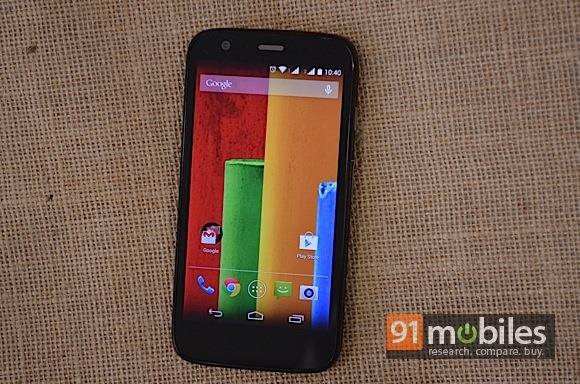
Table of Contents
Staid, yet solid design
Here’s an interesting fact – the Moto G tips the scales at 143g, which is exactly the same as LG’s 5.2-inch flagship the G2, and the gold standard in smartphone build, the metal-clad HTC One. This says something about the Moto G’s build quality, especially considering it’s encased in plastic. Suffice to say that the Moto G won’t be eligible for the lightest smartphone tag, but it sure feels reassuringly solid in the hand. Its looks won’t get you second glances though – and really the only word that comes to mind is ‘boring’. However, you can choose to liven it up with colourful back panels or flip covers offered by Motorola, or opt for one of the many third-party options available.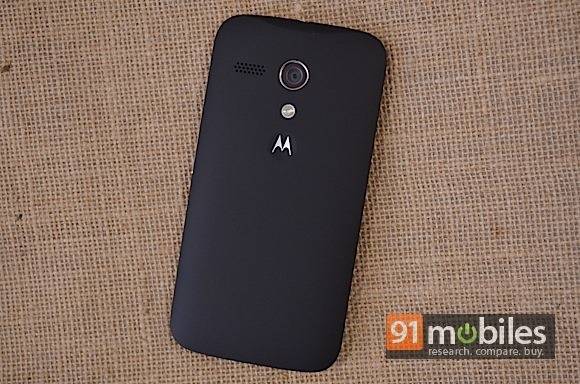 There’s a glass screen at the front with a black bezel, and a matte black rear, and that’s about it. The only embellishment at the rear is a small Motorola logo which is slightly recessed. Above it, you’ll find the LED flash, the circular camera lens and the phone speaker. The back collects smudges and fingerprints like nobody’s business, so you’ll find yourselves cleaning it often.
There’s a glass screen at the front with a black bezel, and a matte black rear, and that’s about it. The only embellishment at the rear is a small Motorola logo which is slightly recessed. Above it, you’ll find the LED flash, the circular camera lens and the phone speaker. The back collects smudges and fingerprints like nobody’s business, so you’ll find yourselves cleaning it often. 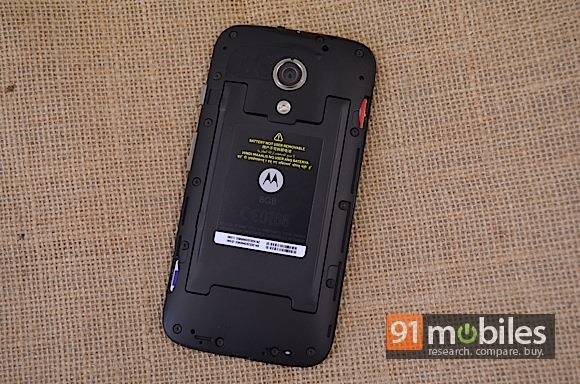 The rear cover can be pried open to reveal the sealed battery and a pair of micro-SIM slots, one on top right and the secondary slot at bottom left – no card expansion for you sir. A black glossy strip runs around the side on the top half of the spine, and the fascia is just the usual mix of screen, bezel, earpiece and front camera. A small notification LED is placed next to the earpiece, and there are no other hardware keys present on the front. The 3.5mm audio socket is on top, where it should be, with a microUSB port at the bottom. The chrome-finished volume rocker and the power key are placed on the right, deviating from the norm for the latter since that’s usually followed by phablets to enhance one-handed usability. Talking about one-handed use, the phone is really a cinch to use with a single paw – the size is compact, fits well in the hand, and the slightly curved rear adds a lot to the ergonomics.
The rear cover can be pried open to reveal the sealed battery and a pair of micro-SIM slots, one on top right and the secondary slot at bottom left – no card expansion for you sir. A black glossy strip runs around the side on the top half of the spine, and the fascia is just the usual mix of screen, bezel, earpiece and front camera. A small notification LED is placed next to the earpiece, and there are no other hardware keys present on the front. The 3.5mm audio socket is on top, where it should be, with a microUSB port at the bottom. The chrome-finished volume rocker and the power key are placed on the right, deviating from the norm for the latter since that’s usually followed by phablets to enhance one-handed usability. Talking about one-handed use, the phone is really a cinch to use with a single paw – the size is compact, fits well in the hand, and the slightly curved rear adds a lot to the ergonomics. 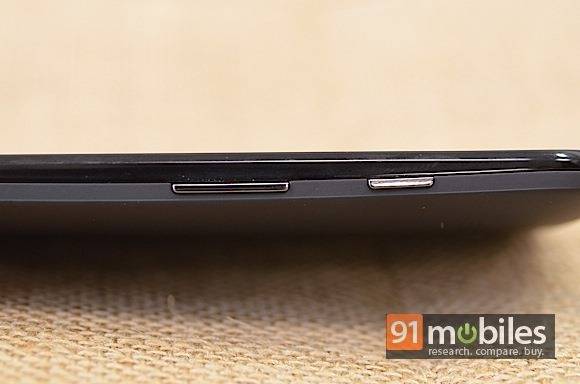 If you’re accident-prone, you’ll also appreciate use of Corning Gorilla Glass 3 for the screen for scratch-protection, and a special water-repellent nano coating on the device, both inside and out, which doesn’t make it waterproof but should keep it safe if you’re stuck in a drizzle.
If you’re accident-prone, you’ll also appreciate use of Corning Gorilla Glass 3 for the screen for scratch-protection, and a special water-repellent nano coating on the device, both inside and out, which doesn’t make it waterproof but should keep it safe if you’re stuck in a drizzle. Yummy screen that oozes awesomeness
So, a 4.5-inch 720p screen would normally make us stifle a yawn. However, the Moto G’s display is one of its strongest points, and is really one of the best we’ve seen in this category. Sharp and vivid is how we’d describe it, but you have to experience it for yourselves to see what we mean. The touchscreen forms the backbone of the user-device interaction for any smartphone or tablet, and the one on the Moto G is certainly an asset – it’s highly responsive and makes text and images come to life, adding another level of immersion to videos and gaming. Sure, with its 4.5-inch screen, the Moto G takes a completely opposite approach as compared to the phablet fad currently making waves in the smartphone world, so you’ll need to accept what it offers and live with it – portability, pocketability and convenient one-handed usage at the cost of a large screen size that’s more suited for media and content consumption.
Sure, with its 4.5-inch screen, the Moto G takes a completely opposite approach as compared to the phablet fad currently making waves in the smartphone world, so you’ll need to accept what it offers and live with it – portability, pocketability and convenient one-handed usage at the cost of a large screen size that’s more suited for media and content consumption. No Lumia this, but the shooter can shoot
The phone camera offerings can be broadly classified into two – those that try and one-up the others by adding on the megapixels, using fancy technology to enhance images and adding tons of features. Then there are others that simply deliver. We’d like to classify the Moto G’s shooter as the latter, despite its not-so-noteworthy 5MP sensor.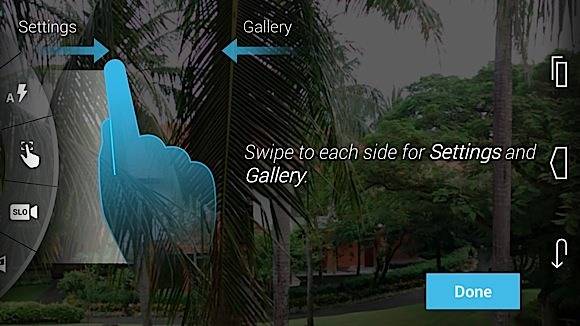 The camera app features an overly-simplistic interface, without even a shutter key to click. You just need to tap the screen and the image is captured, and there’s hardly any shutter lag to speak of. The UI just gives you two icons – one to start video recording and another to switch to the front cam. However, the minimalistic interface has a few tricks up its sleeve. You can just tap and hold on the screen for shooting in burst mode, drag up and down to control digital zoom, or swipe from right to left to access the image gallery. Swipe from the left of the screen to the right, and a half wheel pops out. This allows you to access settings, shoot slow-motion video and switch to other modes such as HDR and panorama. However, even the options available here are minimal and don’t allow for creative control – there’s no option to adjust parameters like white balance or ISO, for example. A deal-killer? We certainly don’t think so.
The camera app features an overly-simplistic interface, without even a shutter key to click. You just need to tap the screen and the image is captured, and there’s hardly any shutter lag to speak of. The UI just gives you two icons – one to start video recording and another to switch to the front cam. However, the minimalistic interface has a few tricks up its sleeve. You can just tap and hold on the screen for shooting in burst mode, drag up and down to control digital zoom, or swipe from right to left to access the image gallery. Swipe from the left of the screen to the right, and a half wheel pops out. This allows you to access settings, shoot slow-motion video and switch to other modes such as HDR and panorama. However, even the options available here are minimal and don’t allow for creative control – there’s no option to adjust parameters like white balance or ISO, for example. A deal-killer? We certainly don’t think so. 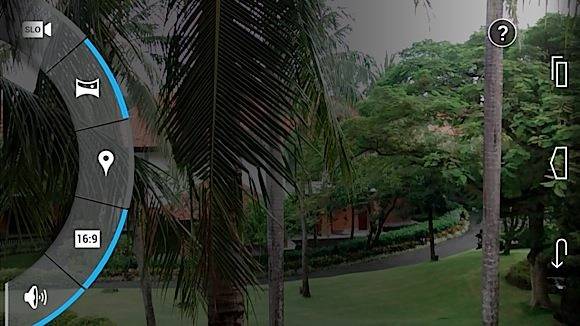 You see, while the Moto G’s camera isn’t a rockstar, it’s no wimp either, especially in good lighting. It churns out shots that are more than usable for the basics such as social sharing and casual shooting, though they tend to look a tad over-saturated on occasion. In fact, thanks to the gorgeous screen, captured images actually look quite scrumptious when viewed on the device. Low light is the bane of most smartphone cameras and the Moto G is no different. The camera can shoot 720p videos and the ones we captured in daylight turned out quite smooth. We’ll put it this way – we won’t count the Moto G’s camera as its plus point, but we won’t count it as a significant downside either. In short, it does its job, and shouldn’t sour the deal if you’re interested in the device. Here’s a taste of the Moto G’s shooting prowess. Click to view them in all their glory.
You see, while the Moto G’s camera isn’t a rockstar, it’s no wimp either, especially in good lighting. It churns out shots that are more than usable for the basics such as social sharing and casual shooting, though they tend to look a tad over-saturated on occasion. In fact, thanks to the gorgeous screen, captured images actually look quite scrumptious when viewed on the device. Low light is the bane of most smartphone cameras and the Moto G is no different. The camera can shoot 720p videos and the ones we captured in daylight turned out quite smooth. We’ll put it this way – we won’t count the Moto G’s camera as its plus point, but we won’t count it as a significant downside either. In short, it does its job, and shouldn’t sour the deal if you’re interested in the device. Here’s a taste of the Moto G’s shooting prowess. Click to view them in all their glory. 






KitKat in its birthday suit
Motorola launched the Moto G in India with Android 4.3, but as soon as we unboxed and set up our review unit, we got a notification to upgrade to KitKat 4.4.2 and we did so gladly. The handset is pretty much the only device in its class that runs KitKat officially, and that also bodes well for it.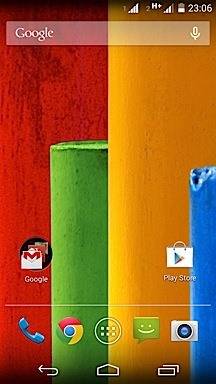
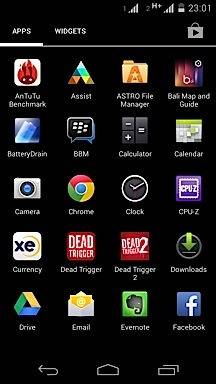 With no frills, no gimmicks and no bloatware, this is Android implemented the way its creator (that would be Google) designed it. It’s completely stock, and though it’s devoid of the Google Experience launcher as seen on the Nexus 5, it comes with the same large icons, transparent dock and virtual keys that change position depending upon orientation. You also get the same dialler that features a modified UI and prioritises commonly-accessed contacts.
With no frills, no gimmicks and no bloatware, this is Android implemented the way its creator (that would be Google) designed it. It’s completely stock, and though it’s devoid of the Google Experience launcher as seen on the Nexus 5, it comes with the same large icons, transparent dock and virtual keys that change position depending upon orientation. You also get the same dialler that features a modified UI and prioritises commonly-accessed contacts. 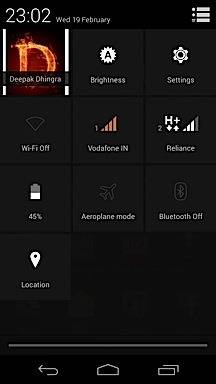
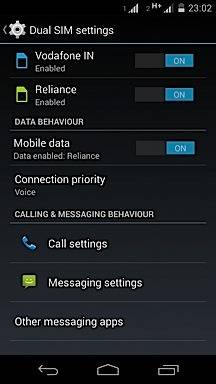 The notification bar gives you access to commonly-used connectivity toggles and settings. Since this a dual-SIM device, the UI includes stuff to manage that by provision of dedicated settings. Under Dual SIM settings, you can toggle either of the two SIMs, rename and colour code them for easier identification and choose the default ones for calling and messaging.
The notification bar gives you access to commonly-used connectivity toggles and settings. Since this a dual-SIM device, the UI includes stuff to manage that by provision of dedicated settings. Under Dual SIM settings, you can toggle either of the two SIMs, rename and colour code them for easier identification and choose the default ones for calling and messaging. 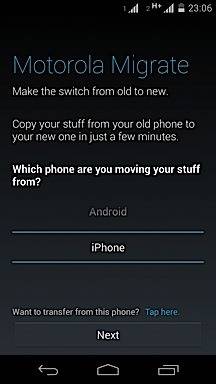
 Apart from the usual set of Google apps and services, the only other apps you’ll find loaded on the device are Assist and Motorola Migrate. The latter, which launches by default when you set up the phone for the first time, or can be accessed via its icon later at any time, allows you to transfer your personal data from an iPhone or another Android smartphone to the Moto G. Assist is an automation app that can automatically switch your phone to silent mode when you’re in a meeting (using your calendar entries) or when you’re asleep (based on the timings you specify). Oh yes, did we mention it’s got an FM radio too?
Apart from the usual set of Google apps and services, the only other apps you’ll find loaded on the device are Assist and Motorola Migrate. The latter, which launches by default when you set up the phone for the first time, or can be accessed via its icon later at any time, allows you to transfer your personal data from an iPhone or another Android smartphone to the Moto G. Assist is an automation app that can automatically switch your phone to silent mode when you’re in a meeting (using your calendar entries) or when you’re asleep (based on the timings you specify). Oh yes, did we mention it’s got an FM radio too? 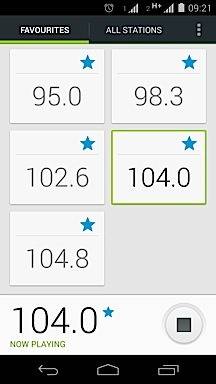
Gets the job done, and quite well too
Many, us included, have the tendency of being bowled over by high-end specs when we see them listed as part of a new mobile phone launch. However, the Moto G’s spec sheet can hardly be called impressive, not by a long shot. Inside sits a quad-core Snapdragon 400 CPU running at 1.2GHz. It’s paired with 1GB of RAM and Adreno 305 graphics, while there are two storage variants on offer – an 8GB model that provides around 5.5GB of actual storage capacity, and a 16GB model with about 13GB of usable storage. One of the major downsides of the device is that there’s no microSD slot for adding more memory, though Motorola provides an extra 50GB of free storage on Google Drive for a period of two years. It also redeems itself slightly by including support for USB On-the-Go (OTG), so you can connect flash drives directly to the device using a cheap adapter. Note that you’ll also need to download a file manager app like Astro File Manager to make use of this capability. As you can fathom, this is a highly useful feature to have, especially for a device that doesn’t allow memory expansion, though it’s just not as convenient in comparison since you’ll need to carry the adapter cable and the flash drive with you and have it jut out when you’re using it. In terms of connectivity, the Moto G comes with dual-SIM support. You can insert a pair of micro-SIMs and both slots support 3G, but note that the dual-SIM support is of the standby variety, meaning that the other number will be unreachable when one of the SIMs is in use. Otherwise, the connectivity features include the usual single-band Wi-Fi, Bluetooth 4.0, A-GPS and wireless display mirroring – there are no other frills like NFC to be had.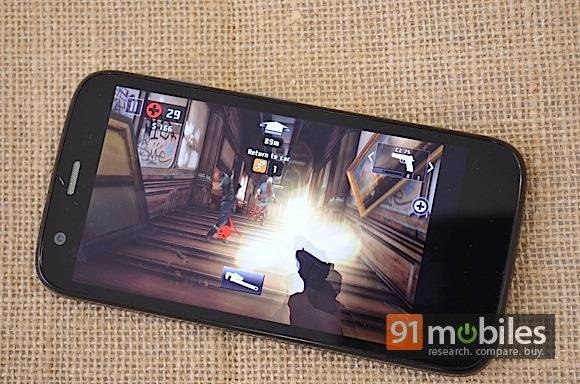 When it comes to the all-important performance aspect, we’re glad to report that the Moto G doesn’t disappoint. Day-to-day tasks and even multitasking is handled quite well, and we hardly faced any significant speed bumps or hiccups. The phone shows its mettle when running graphics-intensive games like Dead Trigger 2 and Riptide GP2 – the visuals are spiffy and the games play smoothly. Suffice to say that if you choose the Moto G as your daily driver, you won’t find it lacking too much as far as performance is concerned.
When it comes to the all-important performance aspect, we’re glad to report that the Moto G doesn’t disappoint. Day-to-day tasks and even multitasking is handled quite well, and we hardly faced any significant speed bumps or hiccups. The phone shows its mettle when running graphics-intensive games like Dead Trigger 2 and Riptide GP2 – the visuals are spiffy and the games play smoothly. Suffice to say that if you choose the Moto G as your daily driver, you won’t find it lacking too much as far as performance is concerned. 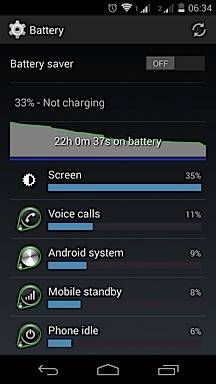 The cherry on the cake is the battery life. The sealed 2,070mAh battery packs in enough juice to last the device for a full working day comfortably even with heavy use, and if your usage is more frugal, you can even stretch it into the second day. Another feather in the cap for the Moto G, and one that tilts the balance well in its favour.
The cherry on the cake is the battery life. The sealed 2,070mAh battery packs in enough juice to last the device for a full working day comfortably even with heavy use, and if your usage is more frugal, you can even stretch it into the second day. Another feather in the cap for the Moto G, and one that tilts the balance well in its favour.Verdict
Looked upon in isolation, the Moto G is just another phone. Let’s face it, it’s not going to change the world as you know it. It won’t bring about world peace and it won’t mend your broken heart. Heck, its plain Jane looks mean you won’t even be able to flaunt it in front of peers and colleagues. The only way it can change things for you is by being a trusty, dependable partner if those are the traits you’re looking for in a daily driver priced under Rs 15,000. And if you are, you shouldn’t look any further than the Moto G. Competing with the likes of the Micromax Canvas Turbo Mini, the Lava Iris Pro 30 and even the Nokia Lumia 720, the Moto G comes across as a device that balances quite a few things well on its able shoulders and beats others fair and square. It doesn’t take a rocket scientist to tell you that between the two storage variants on offer, getting the 16GB version makes more sense. That said, even the 8GB version should suffice if you’re just looking at it as a secondary device and don’t plan to transfer your entire music library. More than how it changes things for users, the Moto G holds the potential to change the game, and that’s what excites us. Comparing it to the Google Nexus 5 wouldn’t be fair since the two are in two different leagues altogether, but the Nexus 5 was also a game-changer when it landed. The Moto G could be a bigger game changer because it’s priced at half of what the Nexus 5 costs, and therefore is affordable by the masses. While the Nexus 5 boasts a few frills like wireless charging and a pedometer, Motorola’s stuck to the basics as far as the features are concerned on the Moto G. But we can tell you that it hasn’t missed out on two killer ones that are bound to be well-appreciated in India – dual-SIM support and an FM radio. If you think of the Indian smartphone arena as a lake which sees the occasional ripple whenever a noteworthy device hits the water like a pebble, devices like the Nexus 5 and the Moto G are rocks that can create waves. And as we mentioned earlier, the Moto is a boulder because of its sweeter price point, and the waves it has the power to create could be large enough to drench its rivals and make them rethink pricing and specs for devices in the same segment. At the end of the day, it’s the user that will benefit, and we’re rubbing our hands in glee. Price: Rs 12,499 (8GB), Rs 13,999 (16GB) Editor’s rating: 9/10 Pros- Sturdy build
- Super-sharp and vibrant 720p screen
- Smooth performance
- Superb value for money
- Non-expandable storage
- Average looks











